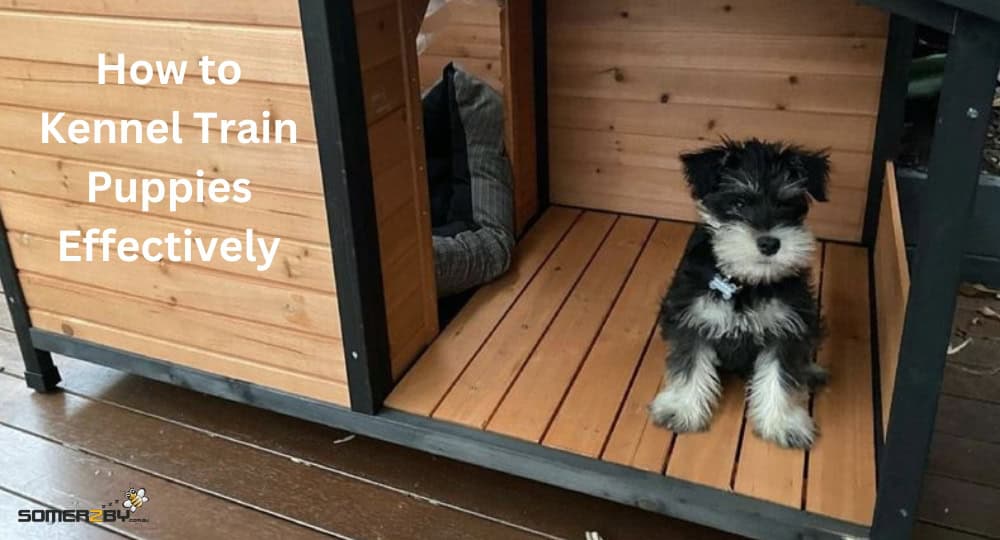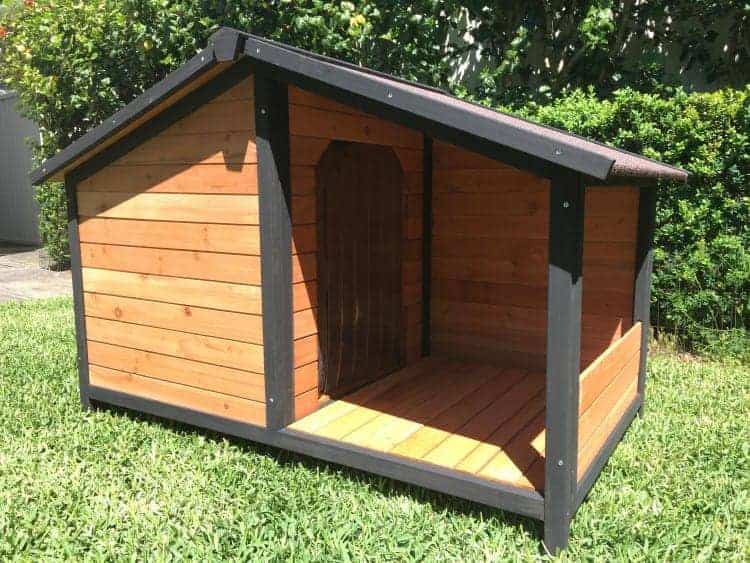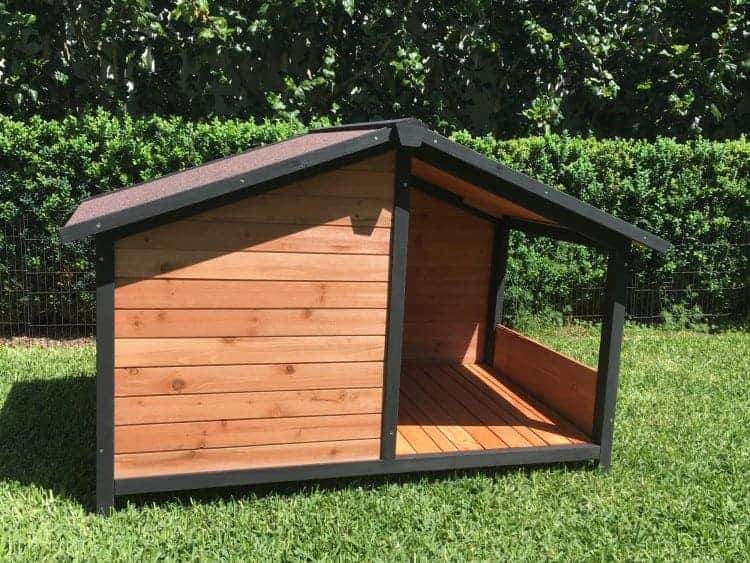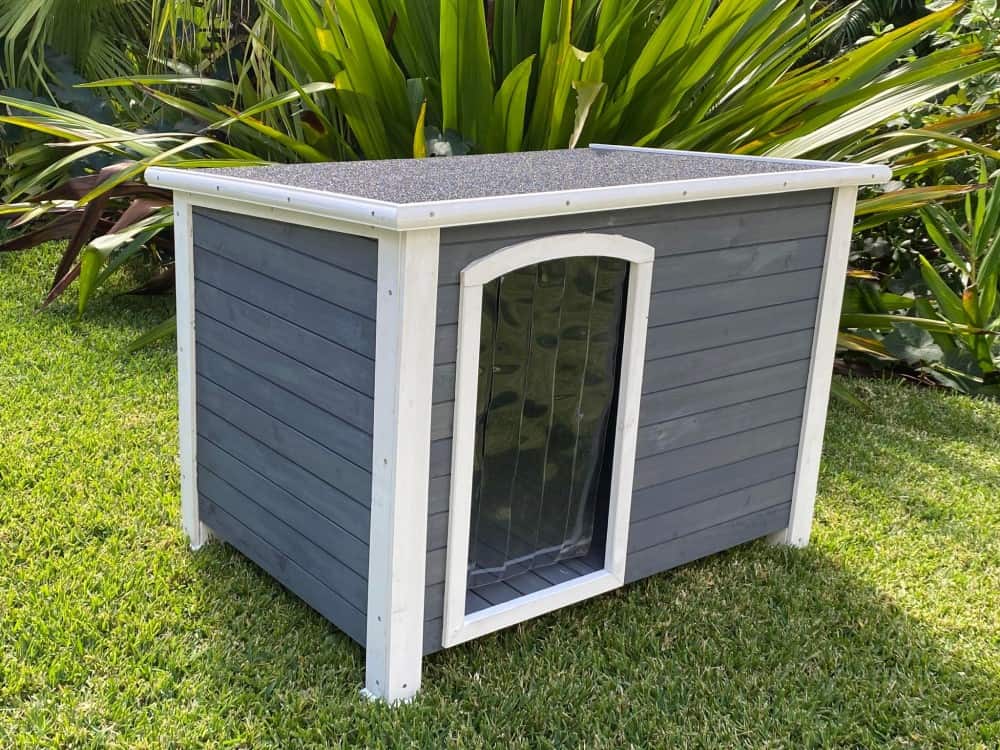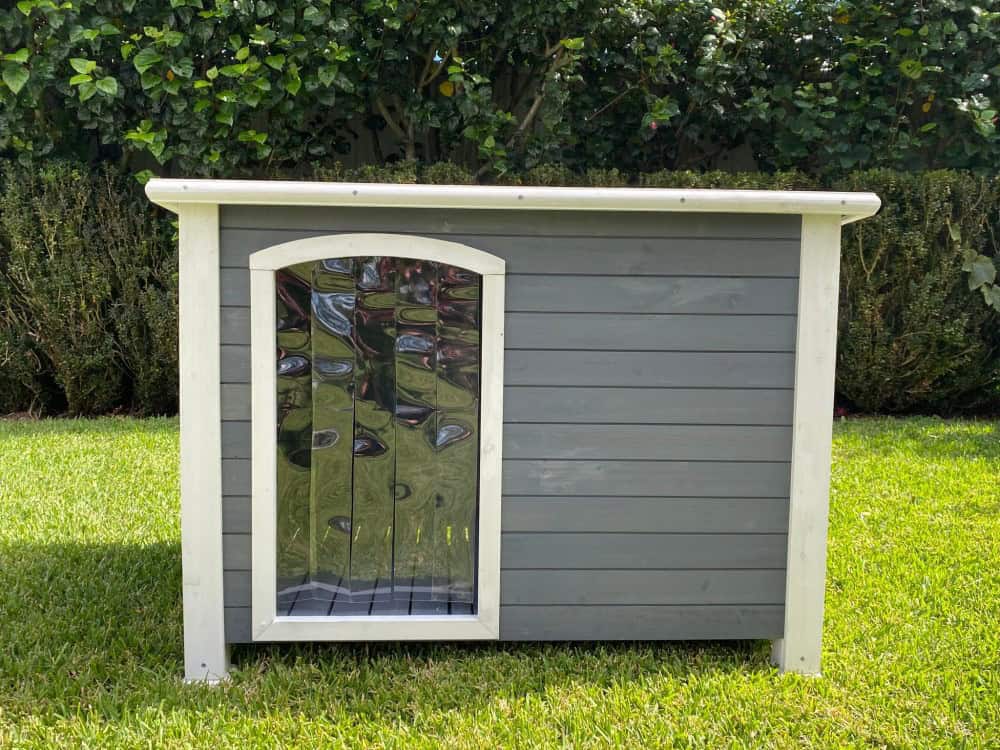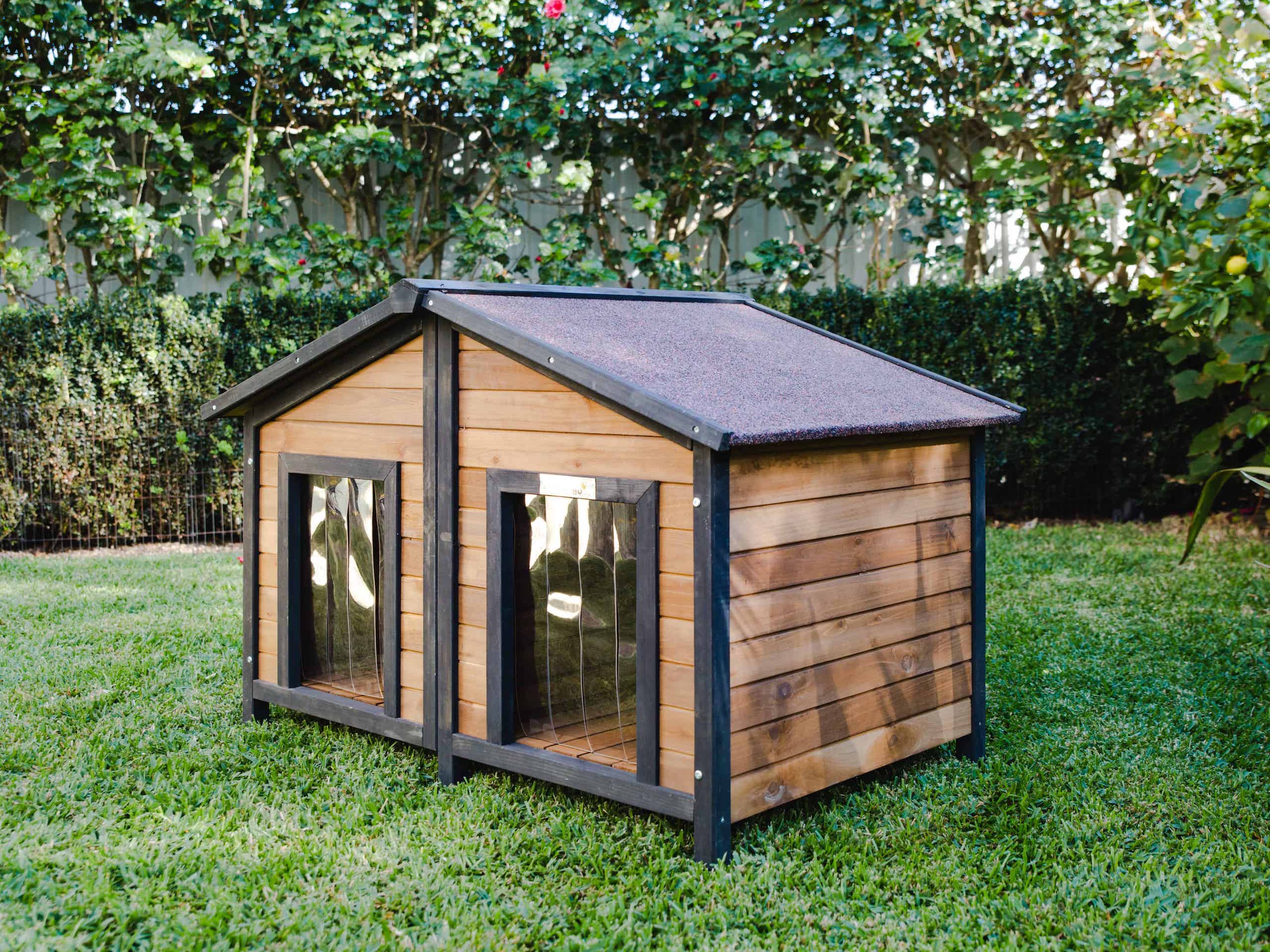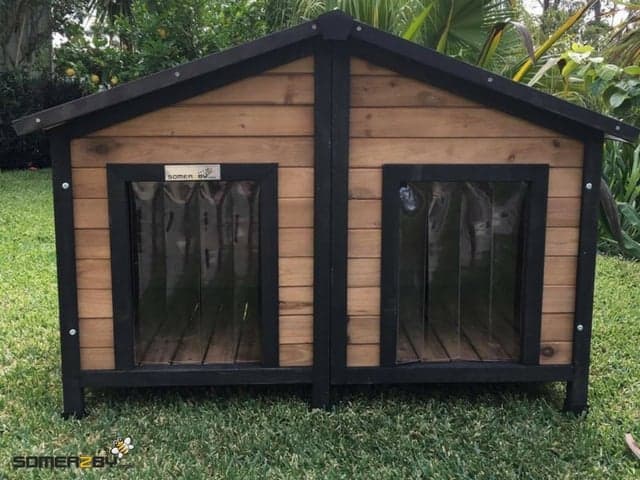Dogs, How To, Info Guides
Step by Step Guide: How to Kennel Train Puppies Effectively
Whether you’ve just welcomed a new pup into your family or are considering adopting one soon, knowing how to kennel train puppies is a key element in fostering a harmonious and stress-free living environment for both you and your canine companion.
In this comprehensive guide, we’ll delve into the art of how to kennel train puppies, unraveling the mysteries behind the process and offering practical tips to transform your puppy’s kennel into a cosy retreat they willingly call their own.
We’ll walk through easing them into their new space gently, crafting a routine that fits in with their daily life, tackling any issues along the way, rewarding good behaviour right, and keeping things smooth sailing long-term.
- Understanding the Basics of how to Kennel Train Puppies
- Choosing the Right Kennel for Your Puppy
- Setting Up Your Puppy’s Kennel
- Gradual Introduction to the Kennel
- Addressing Common Challenges in Kennel Training
- Reinforcing Positive Behaviour During Kennel Training
- Ensuring Kennel Training Success Long term
- Top Kennels For Puppies
- Toni’s Wrap
Understanding the Basics of how to Kennel Train Puppies
Kennel training is much like creating a personal bedroom for your puppy, where they can feel secure and at ease. Puppies, being den animals by nature, easily adapt to kennel training, seeking solace in the secure space reminiscent of their instinctual need for a den.
To kick off kennel training effectively, think of it as teaching your pup to love their new home within your home. Just like you’d enjoy a room with comforts tailored to you, puppies thrive in an area set up with care.
Start by ensuring the kennel feels inviting—a soft dog bed and familiar toys can make all the difference. A well-trained puppy will often retreat to its kennel when feeling overwhelmed or tired, reducing anxiety and potential behavioural issues down the line.
Plus, just like the crate training process, this method supports potty training efforts by tapping into your dog’s natural reluctance to soil its sleeping quarters.
Choosing the Right Kennel for Your Puppy
Selecting a kennel that’s just right for your puppy is crucial. Think about it like choosing a home for yourself; comfort, size, and safety are key.
A spacious kennel from Somerzby can make all the difference in how quickly your pup adapts to its new den.
Appropriate Size:
- Ensure the kennel is spacious enough for your puppy to stand, turn around, and lie down comfortably.
- Consider the anticipated size of your puppy’s adult size to avoid frequent upgrades.
Somerzby has a great guide on choosing the right size kennel.
Sturdy and Durable Construction:
- Ensure the kennel is made from durable material. Chinese Fir Wood is a popular option due to its resistance to rot.
- Kennels with a solid and angled roof design offer better protection against the elements.
Proper Ventilation:
- Look for kennels with adequate ventilation, such as mesh or openings, to ensure proper airflow.
- Ventilation helps regulate temperature and ensures your puppy feels comfortable.
Easy to Clean:
- Choose a kennel with a removable floor or opening roof for easy cleaning.
- Young puppies can be messy, so easy maintenance is crucial for hygiene.
Safe Design:
- Check for rounded edges and minimal sharp points to prevent injuries.
- Ensure there are no small parts that could be chewed off and ingested.
Weather Resistance (Outdoor Kennels):
- If using the kennel outdoors, choose a weather-resistant option to protect your puppy from the elements.
- Consider features such as a waterproof roof and elevated flooring.
Remember, the right kennel provides a safe and comfortable space for your puppy, supporting their well-being and aiding in successful kennel training.
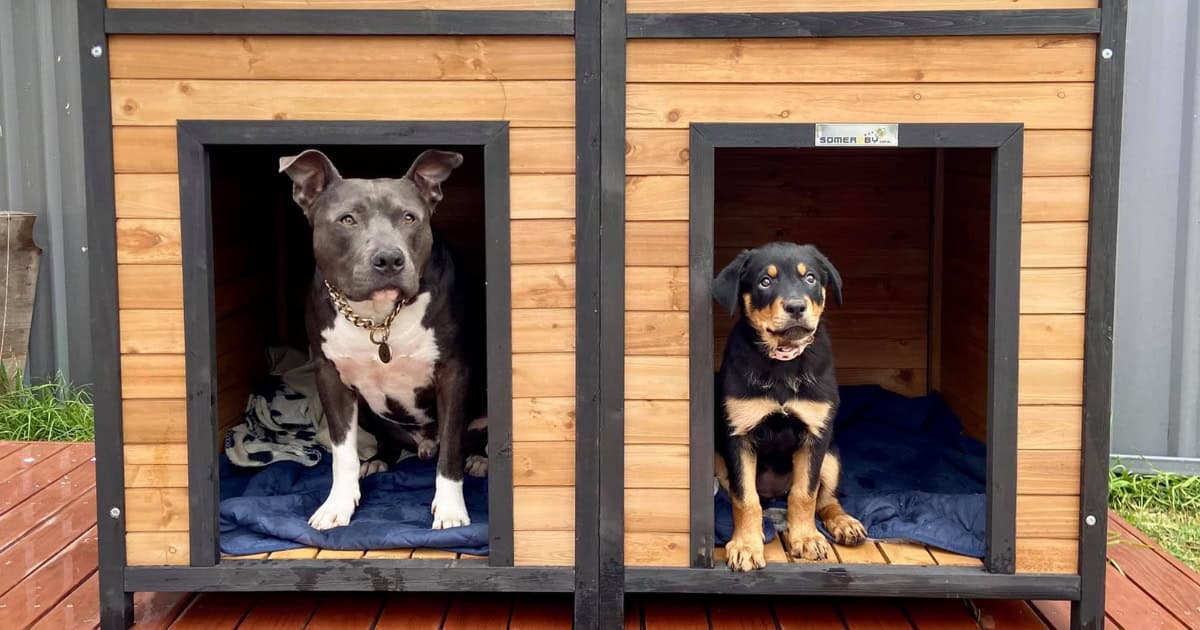
Setting Up Your Puppy’s Kennel
Creating a snug retreat for your puppy begins with finding the perfect spot. A quiet corner, away from heavy foot traffic but still within sight, helps your pup feel secure yet connected.
Inside the kennel, comfort is king. Start with a plush bed that invites snuggling and add familiar scents by placing a worn t-shirt of yours underneath. To make sure it feels like their own den, give them toys they cherish to keep inside their space.
But remember, not just any toy will do—choose safe chew toys designed specifically for puppies to avoid any potential hazards while you’re not around to supervise.
The final touch involves ensuring easy access to fresh water by using bowls that won’t tip over easily—a small detail that makes all the difference.
Gradual Introduction to the Kennel
Introducing your puppy to their kennel can be a smooth process with the right approach. The first step is simply letting them explore. Place the kennel in an area where they spend most of their time.
Curiosity will often lead puppies inside on their own terms, which helps build trust from day one. Feeding your pup meals inside the kennel or giving treats when they enter voluntarily strengthens these associations.
It’s important not to rush this stage—patience ensures that your pet perceives it as their personal space rather than confinement.
Pacing Your Puppy’s Training
Once they’re entering willingly for food and play, you can begin by leaving them alone in the kennel for short periods while staying nearby.
Gradually increase this duration into longer periods but keep an eye out for signs of distress.
If any anxiety arises during training sessions, RSPCA Australia recommends taking steps back in training length until comfort returns—it’s all about moving at your puppy’s pace and ensuring confidence every step of the way.
Addressing Common Challenges in Kennel Training
Kennel training can sometimes feel like you’re trying to solve a puzzle with your pup. But don’t fret; many pet parents face similar hurdles. We’ve got some savvy strategies that could turn the tide.
Fussy about Entering the Kennel
Your puppy might see their kennel as less of a cosy den and more of an unfamiliar box. To change this view, make it inviting by popping in their favourite blanket or including toys that tempt them inside.
Over time, they’ll start associating the space with comfort and security.
Persistent Whining
If whining is becoming an issue, remember patience is key. Ensure you’re not inadvertently rewarding those sad symphonies by giving them attention when they kick up a fuss – wait for quiet moments before giving them attention.
Navigating Separation Anxiety During Training
Sometimes pups just miss us too much. Begin by leaving them in their kennels for short periods while you’re still home.
Gradually increase alone time so it becomes routine rather than something new and scary each time. Anxiety toys can provide pups with comfort during periods of alone time.
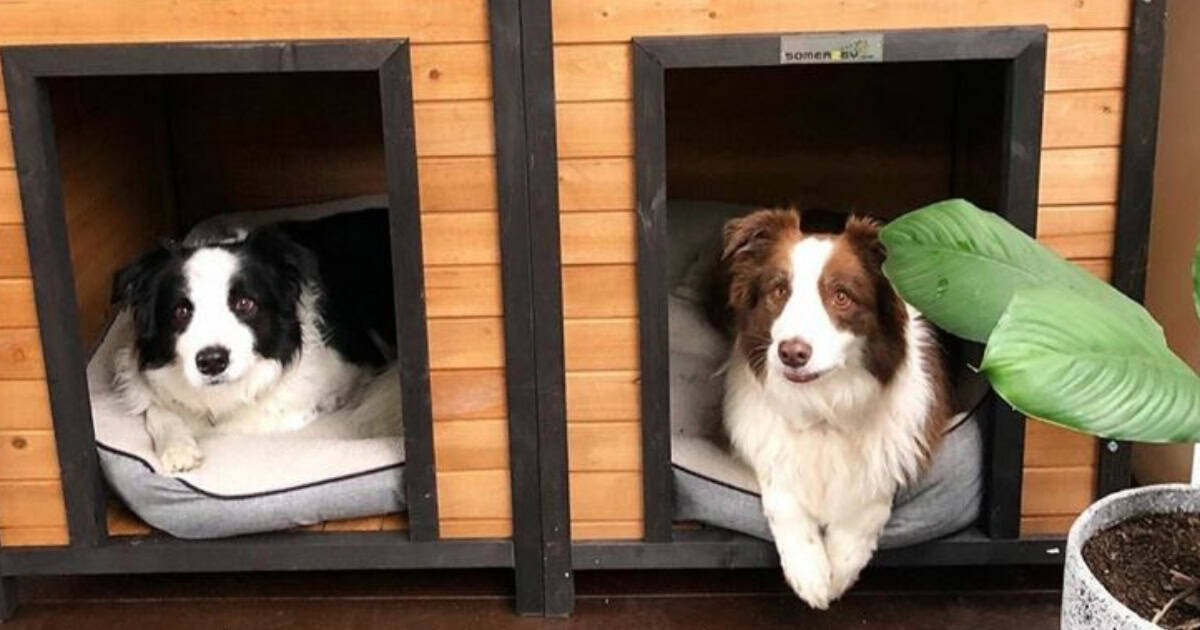
Reinforcing Positive Behaviour During Kennel Training
Praise and treats can work wonders when you’re training your puppy to love their kennel. Every time they enter the kennel, immediately reward them with a small treat or affectionate pat.
This reinforces the idea that the kennel is a source of good things. Create positive associations by feeding regular meals near or inside the kennel at first, then gradually move the food bowls further back.
This method uses mealtime as an incentive for entering and staying in the kennel without fussing. Sometimes though, puppies may whine or bark once placed in their kennel—remain patient but firm during these challenges.
If they cry, wait until there’s a brief pause in this behaviour before letting them out; otherwise, they might learn that crying gets results.
Ensuring Kennel Training Success Long term
Kennel training is a journey, not just a one-off event. It’s about creating a lasting positive association for your pup with their kennel. To keep up the momentum, regular practice and patience are key.
Firstly, maintain the routine that you’ve established during initial training. Dogs thrive on consistency; so make sure to stick to the schedule you set.
Secondly, never use the kennel as punishment—this could undo all your hard work by associating negative feelings with it.
Last but not least, stay attuned to your dog’s needs as they grow. The space that was perfect for a young puppy might get cramped over time.
Keeping these points in mind will ensure long-term success and foster trust between you and your pup.
Top Kennels For Puppies
Somerzby Cubby: The off-center design of the kennel along with the covered porch ensures enhanced protection against wind and rain. Furthermore, it boasts weatherproof features, making it resistant to both elements and drafts.
Somerzby Cabin: The Somerzby Cabin XL Dog Kennel is sturdy, and easy to assemble. It features a rot-resistant timber frame, an opening roof, a bug-repelling door curtain, and a removable floor for easy cleaning. The lift-up roof provides convenient access.
Somerzby Duplex: The Somerzby XL Double Door Dog Kennel is a premium outdoor bed with a removable divider so it can be used for two dogs. It features a heavy-duty, rot-resistant Fir timber frame, two open doors, and a lift-up roof for easy access. The kennel also includes plastic adjustable feet for a raised floor and natural insulation.
Toni’s Wrap
By now, you should have a grasp on how to kennel train puppies.
Kennel training goes beyond creating a designated space; it fosters a sense of security, aids in behaviour development, and becomes a sanctuary where your puppy can thrive.
First off, choose the right kennel; size and quality are key. Then set it up in a quiet area with some comfy bedding and toys. Ease them into their new house gently. Stick to the schedule because routine gives pups confidence.
Remember, every ‘good dog’ deserves praise or a tasty treat! If you’ve followed these steps, you’re well on track for success in kennel training your puppy!
Now go enjoy that peace of mind knowing they’re sorted when you’re not around.




